The fruits of hectic imaginations and fevered expectations do not ripen overnight, if at all. Even the wildest flights of technological and architectural fancy enjoy a honeymoon period before crashing into reality and, often, oblivion. Of these mirages, NEOM, the Saudi city in the desert envisaged to stretch for 170 kilometres, is now under development or ‘continuous evolution’, as Roger Nickells, head of design and construction, puts it. It incorporates every smart urban fix, yet the reality (going by computer-generated images as opposed to the churned desert soil on site) is a hyper-styled Gulf tourist resort, with ZHA and Morphosis and other slick operators gilding the eco-lily.
Meanwhile Telosa (based upon the Greek word for ‘highest purpose’), as dreamed up by Marc Lore, is a city searching for a site in Arizona, Nevada or Utah. At the core of the project is the idea of ‘Equitism’, a version of the theory of capturing land value known as Georgism (after Henry George) that informed Ebenezer Howard’s thinking about the Garden City. A future city that provides its own endowment sounds fragile and deliciously utopian in the current political temper of the American Midwest, but I will be watching. Tireless Danish starchitect BIG is designing it.
Equally hectic and more baffling in a world that claims to want to leave a more modest footprint, but acts contrariwise, is the continuing rise of skyscrapers. I remember the discreet charms of Austin, a city which in the mid 1980s still knocked the clichés about oil affluent Texas for six, with its canal threading sleepily through the town and modestly proportioned buildings. Forget it. The Waterline tower, the city’s first ‘supertall’ (designed by Kohn Pedersen Fox), has just broken ground. Moving a couple of thousand kilometres to the north-east, Herzog & de Meuron is building very high indeed in Toronto. Nor should the British be smug. At 63 storeys high, 55 Bishopsgate is the latest piece to fit into the dense jigsaw of the City of London, which means jostling with 22 Bishopsgate and 1 Undershaft (the latter even taller, and designed by thoughtful Eric Parry). The supertalls send long shadows across cities, however slow their gestation.
Manchester has Factory International to look forward to, a massive hangar of a cultural space designed by OMA, with Ellen van Loon as lead architect. It will take a lot of filling and the opening in June 2023 is marked by the return of the Manchester International Festival. Stratospheric budget overruns have long enraged locals who find themselves picking up much of the tab (tucked away in their rates and services bills). Yet they might take comfort looking across the Atlantic and all the way over to the West Coast, where the sluggish emergence of Peter Zumthor’s reworking of LACMA and spectacular rising costs have made Los Angeles County taxpayers even crosser than their Manchester counterparts.
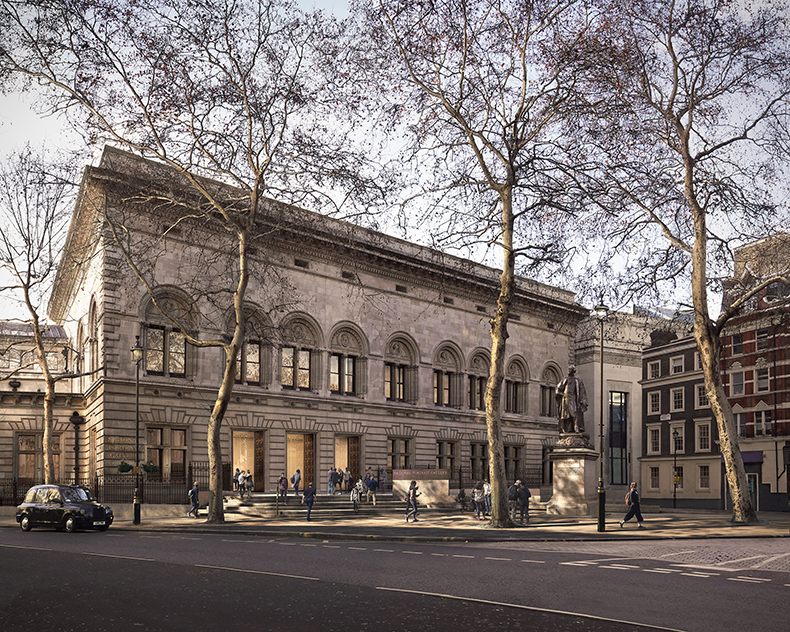
Proposal for the forecourt of the National Portrait Gallery in London by Jamie Fobert Architects. Image: © Forbes Massie
In London, major museums are coming and going as rarely before. The Museum of London closed after 45 years on its London Wall site, promising to reopen in 2026, reborn as the London Museum in Smithfield. Meanwhile the National Portrait Gallery, closed since 2020, will reopen this summer. Ironically, the master stroke by Jamie Fobert Architects seems, in retrospect, a case of the blindingly obvious. Now turned to face north on to Charing Cross Road, with some forensic removals and adjustments seen over an urbane landscaped space, it looks just right. Around the corner on Trafalgar Square, the National Gallery’s tortured attempts to shoehorn a single main entrance on an awkward corner into Venturi Scott Brown’s Sainsbury Wing has met strong opposition, though to little practical effect. To add insult to injury, there’s an existing central entrance requiring some adaptation for disability access, a far from impossible task in clever hands. The anodyne answer chosen to satisfy an impossible brief will be a misguided flourish to marking the National Gallery’s bicentenary in 2024.
But few building projects can have had more alarms and reverses than the restoration of the great Bradford Odeon in West Yorkshire. In 2014, plans to revive it developed under the expert eye of theatre specialist Tim Ronalds, whose firm brought the Hackney Empire in east London back into resplendent form. In 2018, however, the architect was replaced by a more international and generalist practice, thought to be cheaper. In December came the good news that Tim Ronalds has been reinstated and the work carries on as before, with the aim of being completed in the autumn.
No major building in a British city has been crying out for help quite as plaintively as the former Royal High School in Edinburgh. Missteps aplenty by the city council were seemingly fostered by wilful blindness as to the qualities of Thomas Hamilton’s stately classical building looking down on the city from Calton Hill. It began to feel like a victim of the same myopia displayed by Glasgow towards the deterioration of work by its own great architectural son, Alexander ‘Greek’ Thomson. Now, at last, the future for the old High School has been secured. A posse of distinguished conservation architects is preparing to convert it into a National Centre for Music, a purpose for which it is eminently well fitted.
Whatever else is happening, 2023 is the year of Christopher Wren, who died 300 years ago in February. Nothing matches the punch in the guts I get while looking upwards, waiting for the no. 17 bus on the south side of St. Paul’s. The smart travails of a linear city in the Saudi Arabian desert or the unworldly hopes underpinning a utopian settlement in a dusty corner of the United States are intriguing, but that stepped rockface of Portland stone in the shifting evening light is wondrous. Raise your glasses to Wren300.
Unlimited access from just $16 every 3 months
Subscribe to get unlimited and exclusive access to the top art stories, interviews and exhibition reviews.

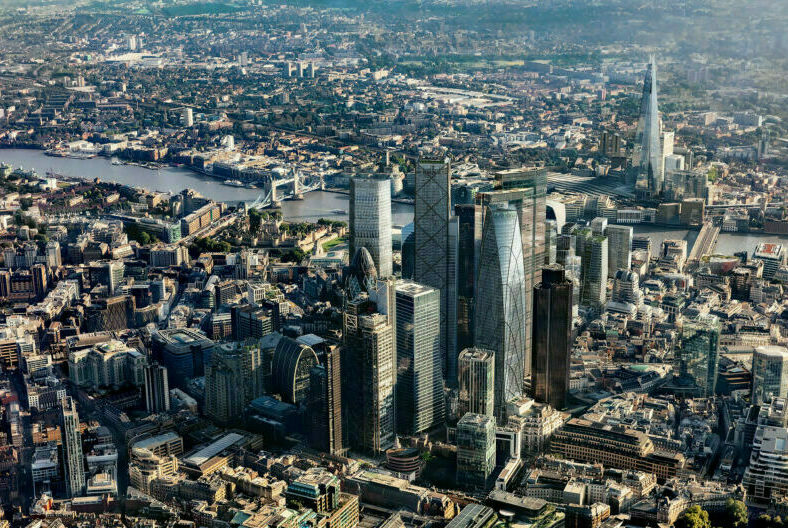
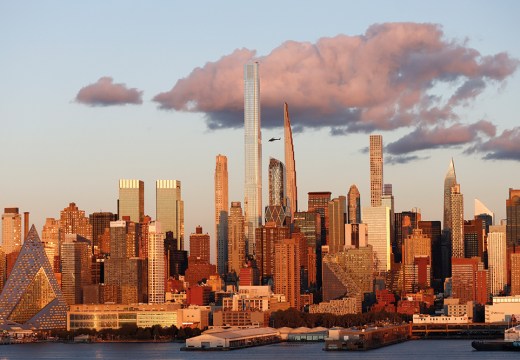
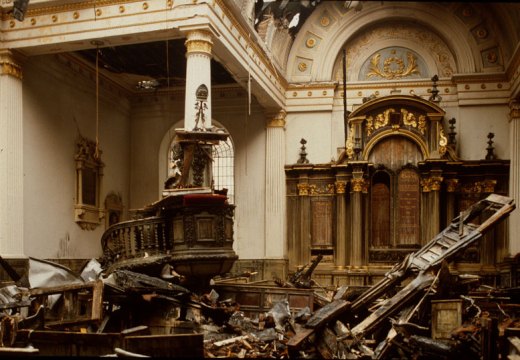
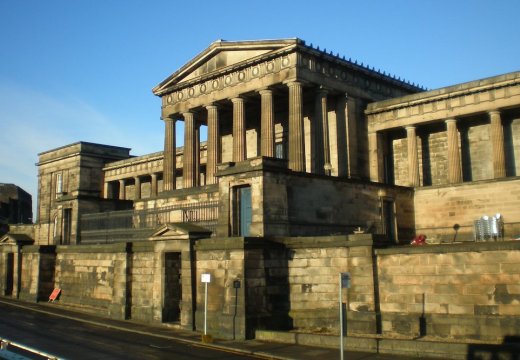









![Masterpiece [Re]discovery 2022. Photo: Ben Fisher Photography, courtesy of Masterpiece London](http://www.apollo-magazine.com/wp-content/uploads/2022/07/MPL2022_4263.jpg)
It’s time for the government of London to return to its rightful home